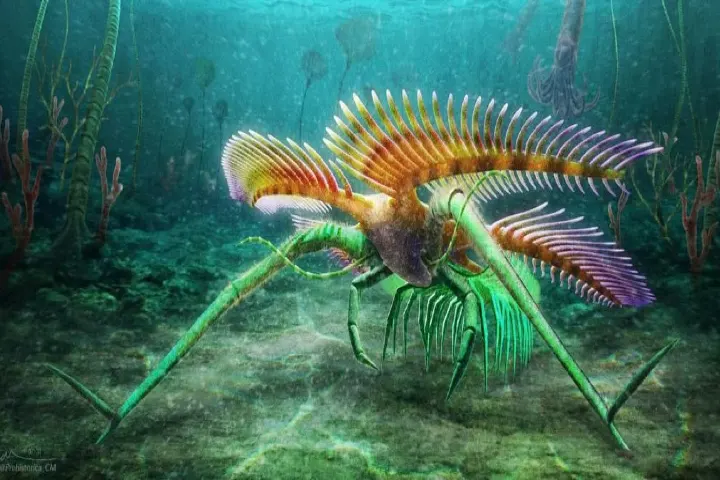Every now and then, scientists are surprised by Nature. Take for example this aquatic arthropod which had a strange appearance and had no eyes and used stilts to move around, and that too 450 million years ago!
This creature was recently found by palaeontologists and that too in an “exceptionally well preserved” condition near Lake Simcoe’s eastern shore situated in Canada’s Ontario as per a report in sciencealert.com. Discovered in a stone quarry, this place is well-known for marine fossils and is called “Paleo Pompeii”.
The researchers studying the species have christened it as Tomlinsonus dimitrii, representing the extinct group of arthropods known as marrellomorphs which thrived 450 million years ago, a period known as Ordovician. The creature was so named as it was excavated from an active quarry owned by the Tomlinson Group.
Unlike other echinoderm fossils, this discovery is startling since it is completely soft-bodied.
Talking about it to Live Science, the study’s lead author Joseph Moysiuk said: "We didn't expect to find a soft-bodied species at this site. When we think of fossils, we typically think of things like dinosaur bones and shells. However, soft-tissue preservation is very rare, and there are only a few sites around the world where soft-bodied organisms have been found.
Moysiuk, is a researcher at the Royal Ontario Museum (ROM), Toronto and a doctoral candidate in ecology and evolutionary biology at the University of Toronto.
The creature measures 2 inches or 6 centimetres and has an ornate head shield that comprises two curved horns covered in feather-like spines. The segmented body of this specimen is like that of other arthropods like spiders and insects and has several sets of limbs that are segmented with one being an extraordinary pair.
Sharing details about it, Moysiuk said: "Underneath the head, there is this amazing pair of limbs that are extremely long and have foot-like projections at the terminal ends, which we think it most likely used to stilt its way across the seafloor. It also appears to be blind, since it doesn't have any eyes at all."
The excavation of this species was led by George Kampouris, who is the study’s co-author and an independent paleontological technician. Before this, marrellomorphs were generally found at Cambrian Burgess Shale in British Columbia’s Canadian Rockies which is an older fossil site.
Interestingly, T. dimitrii, as per palaeontologists, is quite similar to another extinct soft-bodied arthropod called Marrella splendens which had been discovered at the Burgess Shale.
Also read: Tracing history of cannibalism – it all started 541 million years ago
The Lake Simcoe quarry like the Burgess Shale was in ancient times immersed in water and formed part of a shallow tropical marine sea which during those times covered a sizable part of present-day Canada. The seafloor over a period of millions of years became blanketed in sediment caused by storms.
Throwing light on this aspect, Moysiuk observed: "What we're seeing is the rapid burial of these organisms that were living on this flat, shallow ocean bottom and were repeatedly smothered by large undersea mudflows coming from storm events. You can imagine hurricanes hitting this shallow shelf area and burying the whole community of organisms, which is why we nicknamed the site 'Paleo Pompeii.' These organisms were entombed exactly where they were living, and what we're seeing is them frozen in time."
Details of this study were published in the Journal of Palaeontology.




















